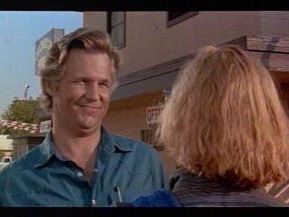|
|
Chapter Two: Texasville vs. The Evening StarBy Brett Ballard-BeachJuly 7, 2011
Texasville (1990) and The Evening Star (1996) took 19 years and 13 years respectively to reach the screen largely because they were based on book sequels that didn’t come out until many years after the movies. In terms of their journey from the page to the screen, each of them arrived in a shorter amount of time then it took the first films (The Last Picture Show and Terms of Endearment) to achieve their adaptation from the literary to the celluloid medium. For Texasville, the task was aided by the return of the co-writer/director of the first film, Peter Bogdanovich, as well as the key cast members who were still left alive at the end of The Last Picture Show. The Evening Star marked the directorial debut of an author famous in another medium - playwright Robert Harling - who is best known for penning Steel Magnolias (the play and screenplay), as well as adapting The First Wives’ Club into a surprise hit for Paramount, in the fall of '96, mere months before the Christmas Day release of The Evening Star. In a case of parallelism that suggests to me the powers that be were hoping to catch lightning in a bottle again, Harling’s novice status mirrors television writer and producer James L. Brooks’ first trip to the director’s chair in 1983 with Terms of Endearment. That won Best Picture, Director, Actress, Supporting Actor, and Screenplay Adaptation and wound up pulling in over $100 million. The Evening Star grossed only about a tenth of what its predecessor did and has a single Golden Globe nomination in its corner.
|

|
|
|

|
Friday, November 1, 2024
© 2024 Box Office Prophets, a division of One Of Us, Inc.


